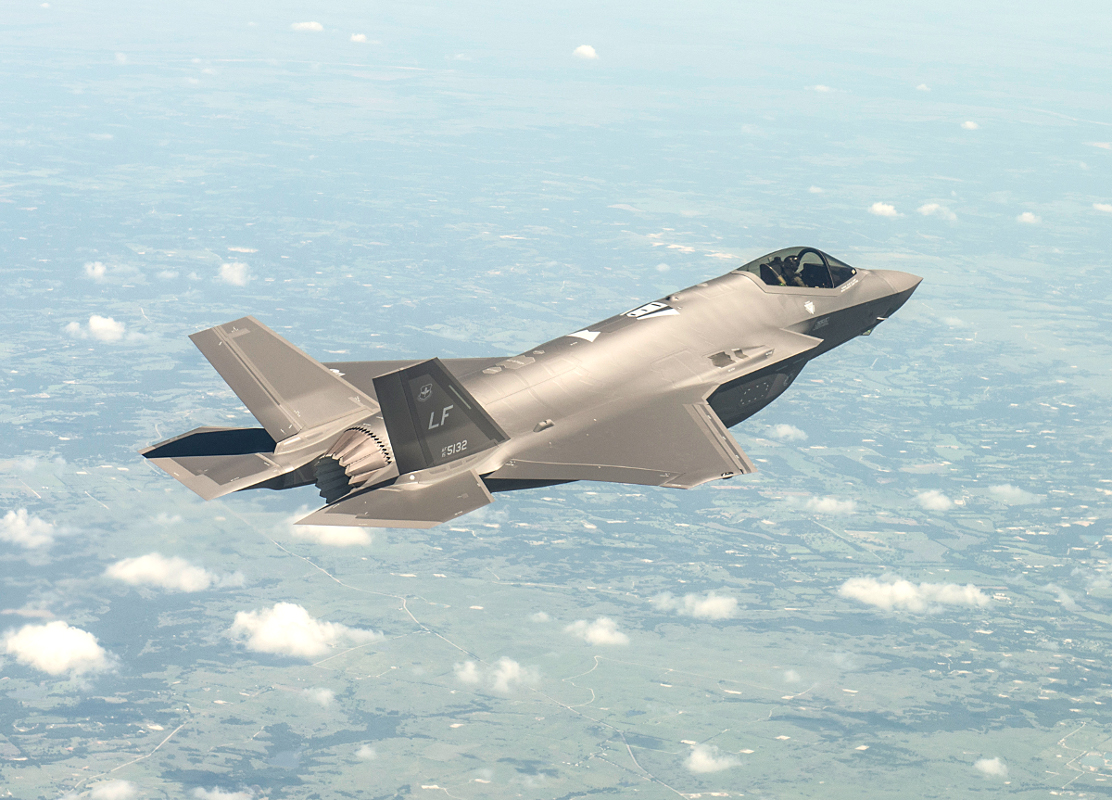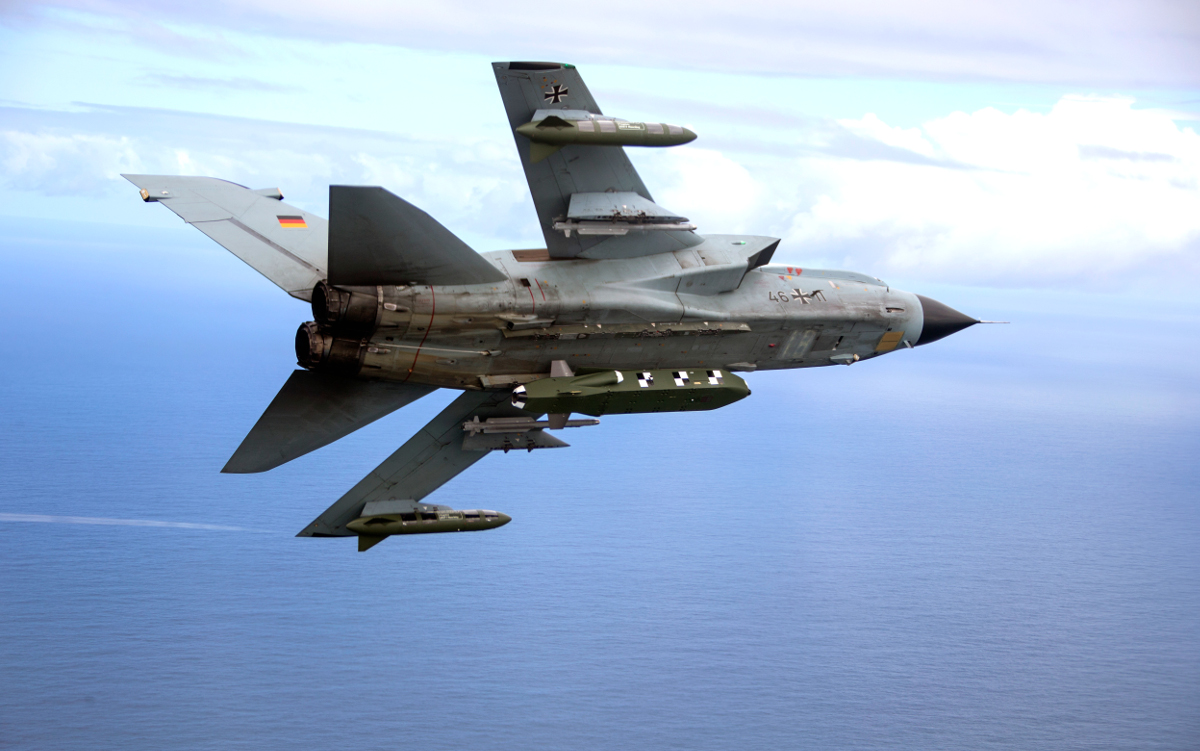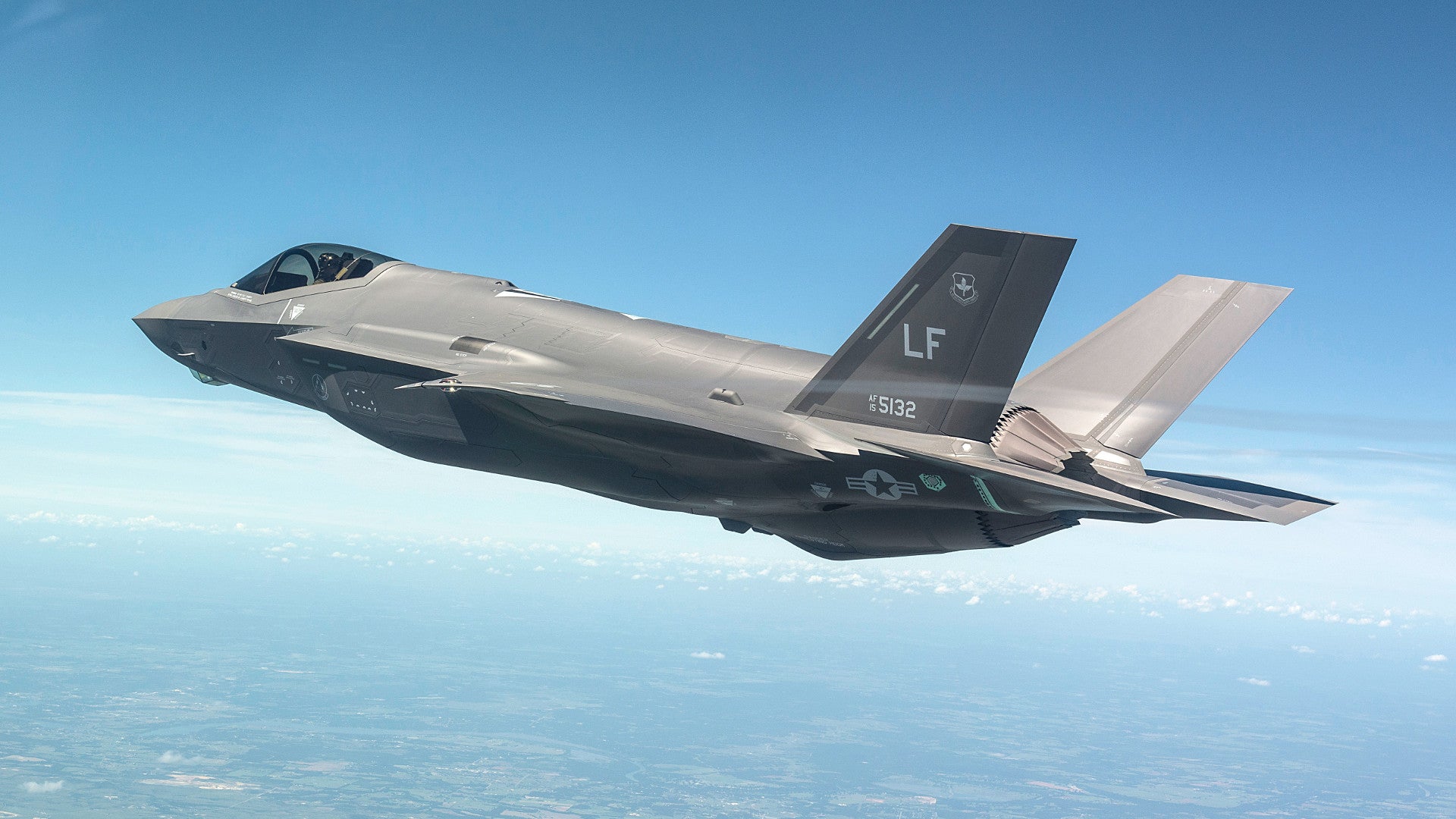Despite a plan to jointly develop its own fifth generation fighter jet with France, Germany is still very interested in joining the F-35 Joint Strike Fighter program. The German Air Force, or Luftwaffe, is looking hard at the American jet as it presses for purchases of an already in production or development design to replace its aging Panavia Tornado swing-wing combat aircraft.
The F-35 is the “preferred choice” on a shortlist of aircraft the Luftwaffe is looking at to replace its approximately 85 Tornados, a “senior service official” speaking anonymously under the Chatham House Rule, told Jane’s 360, according to a report on Oct. 8, 2017. In May 2017, Reuters revealed that Germany’s air arm had received a classified briefing on the Joint Strike Fighter as part of the plan.
“The Tornado replacement needs to be fifth-generation aircraft that can be detected as late as possible, if at all. It must be able to identify targets from a long way off and to target them as soon as possible,” the German official told Jane’s. “The German Ministry of Defense is looking at several aircraft today, including the F-35 – it is commercially available already, has been ordered by many nations and is being introduced into service today, and has most of the capabilities required.”
Based on these requirements, it’s hard to see any alternative to Lockheed Martin’s F-35. China and Russia are the only other countries with flying fifth generation designs, which are simply not realistic options for NATO member Germany.

If the Germans were to join the Joint Strike Fighter Program now, given the advanced state of the project, they might be able to escape paying a significant amount for the aircraft’s continued development.
In addition, the Luftwaffe would be able to benefit from expanding infrastructure to support the jets in Europe. The Netherlands is working to build an engine test and maintenance depot, while the Italians already operate the only final assembly and checkout (FACO) facility on the continent, which is already delivering aircraft to that country’s military.

These are important considerations as the German military seeks to modernize and otherwise improve its readiness across the board. The functional capabilities of the country’s armed forces had been in steady decline after the end of the Cold War seemed to transform the geopolitical landscape in Europe.
Russia’s revanchist foreign policy, which became fully visible when it took over Ukraine’s Crimea region in 2014, has stood this calculus on its head. The Luftwaffe’s desire for a fifth generation Tornado replacement is likely at least in part based on concerns about the growing scale and range of the Kremlin’s integrated air defenses, which include long-range surface-to-air missiles and associated radars situated along its western borders, in its Kaliningrad enclave on the Baltic Sea, and the occupied Crimean Peninsula.
In response, Germany has moved to revitalize its armed forces. The country upped its annual defense spending by 2 billion Euros in 2017 – just more than $2.32 billion at the rate of exchange at the time of writing – and expected that to rise to almost $40 billion Euros – nearly $4.65 billion – by 2020.
But this has to cover a wide array of new equipment and improvements to existing systems. And the Luftwaffe needs a replacement for the Cold War-era Tornados, an Anglo-German-Italian joint development, as soon as possible.
In 2014, Der Spiegal, citing a leaked government report, said only 66 of the aircraft were airworthy at all and that less than 40 were combat ready. A year after that, Deutsche Welle
obtained another review that showed the fleet’s readiness has slipped even further, with only 29 available for actual operations.
The state of the jets has been on full display since the Luftwaffe started flying the aircraft on reconnaissance missions against ISIS terrorists in Iraq in January 2016. Germany initially deployed six of the planes to Turkey’s Incirlik Air Base, but a political spat forced it to move the contingent to Jordan in October 2017. By that point, the total number of Tornados on hand had dwindled to just four.

Previous reports have suggested that the Germans were looking to retire the old swing-wing jets no later than 2035, but the official stressed to Jane’s that this was the estimate for when the last aircraft would have to head to the bone yard and that the process would have to start much earlier.
“The timeframe suggests we need to start introducing successor in about 2025 to cover the Tornado retirement in 2030 – we need a five-year transition phase,” they explained. “That is only seven years away, and so it is very unlikely that industry could develop and introduce an entirely new aircraft type that fulfils the functionalities that we require.”
This assessment isn’t wrong, especially with regards to fifth generation fighter jets. As we at the War Zone have noted in the past, the development cycles for this type of aircraft have proven to be long, complex, and almost prohibitively costly for many countries.
Though the Germans announced they would be working with the French on a clean-sheet design in July 2017, this aircraft wouldn’t likely arrive until sometime between 2030 and 2040 at the earliest. This is when European consortium Airbus estimated it would be able to deliver on a fifth generation concept in response to an earlier German-Spanish requirement, which it dubbed Future Combat Air System (FCAS), according to a public presentation the company made in 2016.

Airbus is now pushing ahead with FCAS in response to the new Franco-German plan. The proposal incorporates both manned and unmanned components, all linked together, sharing information back and forth, as well as draw additional information from separate platforms in the air, on the ground, or in space.
As such, the European aviation consortium says the proposed stealth fighter jet component will include powerful sensors and data links, easy to upgrade software that makes use of artificial intelligence to aid in decision making, the necessary cyber security protections to prevent hostile actors from breaking into
the overarching network. There are even plans to add a directed energy weapon, though Airbus has not made clear if this would be an offensive or defensive system.
Just getting the aircraft is only one part of the picture, though. The War Zone’s own Tyler Rogoway has repeatedly highlighted, the high costs associated with operating and maintaining fifth generation aircraft. The F-35 in particular has already shown itself to have particularly complicated maintenance and logistics chains.
This is in no small part due reliance on Lockheed Martin’s Autonomic Logistics Information System (ALIS), which is both at the core of the Joint Strike Fighter’s internal computer brain and is the basis of the cloud-based network that supports the jets and their operations. In October 2017, the U.S. Government Accountability Office issued a scathing report on this sustainment infrastructure as it applies to American F-35s, having found that at any time, on average, more than 20 percent of the existing U.S. Air Force, Navy, and Marine Corps jets were not flyable at all because of a lack of appropriate spare parts.
All of this begs the question of whether any F-35s the Luftwaffe might acquire would be truly combat ready by the time it needs them to take over for the Tornados. And with the parallel plans to replace its Eurofighter Typhoons with an Anglo-French fifth generation fighter jet, Germany could be looking at having to manage the combined costs of supporting two distinct types of highly advanced aircraft.
On top of that, unless France and Germany were to find additional partners, they would be stuck with the entire bill – almost certain to be in the 10s of billions of dollars for research and development alone – for the fifth generation Typhoon replacement, which could easily require most of, if not all of Berlin’s planned defense budget growth. The F-35 program has been a supremely costly endeavor even with more than a dozen countries contributing already.

Though its hard to understand why Germany would need two fifth generational designs, Scrapping the Franco-German arrangement could be politically problematic, as well. France’s decision to back out of the Typhoon project and pursue the Dassault Rafale, had long provoked the ire of the remaining parties.
By the time any new clean sheet design would be available, it’s not even clear that a manned fighter jet would be the best option. Unmanned combat air vehicles (UCAV) are advancing at a steady pace and might offer a more cost-effective alternative for various mission sets. As noted, Airbus’ own concept, now known as the Next Generation Weapon System (NGWS), already included a significant pilotless component.
All of this could make the German Ministry of Defense hesitant to go with the F-35 as a replacement for its Tornados in the near term, despite any particular service preferences. An in production late fourth generation type, such as the French Rafale, the Swedish Gripen E, Boeing’s F-15 Advanced Eagle, or Lockheed Martin’s own Block 70 F-16 Viper, could be a more attractive option. With regards to the Tornados and their primary air interdiction mission, the F-15 with its heavy bomb load might be the best analogue. Boeing also says it is looking to offer limited low-observable features on its Block III F/A-18E/F Super Hornet, which might present another avenue to a more affordable stealthy capability.
And though less advanced than the F-35, these aircraft – likely also on the shortlist of options – would offer a significant increase in capability over the Tornados now and would be more than able to support Germany’s immediate domestic and overseas needs. It could even allow the country to expand its ability to take on NATO air policing duties, a job that only its Eurofighters are able to do at all credibly at present.
Combined with long-range stand-off weapons, a fourth generation multi-role combat aircraft could still provide an important service in a potential high intensity European conflict, in which Germany would unlikely be operating outside of a coalition of other NATO members, including the United States. German Tornados are already capable of carrying the German-Swedish KEPD 350 Taurus cruise missile.
The Germans will have to make a decision one way or another soon, since the Tornados are rapidly heading toward the end of their service lives whether a replacement is ready or not.
Contact the author: joe@thedrive.com
